Didascalies by Luc Ferrari
Tracklist
| 1. | Rencontres fortuites | 23:14 |
| 2. | Tautologos III | 21:19 |
| 3. | Didascalies | 15:08 |
Credits
released March 16, 2017
The story of the last part of a trilogy
The idea of bringing together Rencontres fortuites, Didascalies and Tautologos III - two recent works for piano, viola and electronics, and one open-ended work - imposed itself at a concert at the Boendael Chapel in Brussels, where Collard-Neven and Royer performed Didascalies, with Ferrari attending. A few months later, we found ourselves in the legendary Brème studios, having to deal with the waiting, the Tonmeister's mood swings, and Luc, sick, having a hard time with long commutes and schedule changes. And so the last work was finally developed at La Muse en circuit, the studio Luc already knew so well, in a suburb of Paris. On the 9th of July 2005, we were getting to know the surroundings; Luc, Brunhild and Christophe Hauser were already there. The musicians were on a train back from a concert in Germany. While waiting for them to arrive, we started filming the empty studio. A film perhaps, and a new album. We were with Luc in early July 2005, when he was working with Jean-Philippe Collard-Neven and Vincent Royer on what would become his last recorded piece: a new version of Tautologos. We were there, insisting, filming the whole session. Luc: "The tape is 21 minutes long and there are three rules," and the piece got woven, piano and viola breaking down, starting anew in the opposite direction, discreetly s tepping out, bandoneon, DX7, building themselves back as the night crept in. The air displacement of books being closed every two and a half minutes...the musicians in the darkness of the studio, absorbed, counting, Luc in the control room, not seeing the scene, simply focused on listening "while making mostly silence..." A month later, we learned the news. / Guy Marc Hinant
The story of the last part of a trilogy
The idea of bringing together Rencontres fortuites, Didascalies and Tautologos III - two recent works for piano, viola and electronics, and one open-ended work - imposed itself at a concert at the Boendael Chapel in Brussels, where Collard-Neven and Royer performed Didascalies, with Ferrari attending. A few months later, we found ourselves in the legendary Brème studios, having to deal with the waiting, the Tonmeister's mood swings, and Luc, sick, having a hard time with long commutes and schedule changes. And so the last work was finally developed at La Muse en circuit, the studio Luc already knew so well, in a suburb of Paris. On the 9th of July 2005, we were getting to know the surroundings; Luc, Brunhild and Christophe Hauser were already there. The musicians were on a train back from a concert in Germany. While waiting for them to arrive, we started filming the empty studio. A film perhaps, and a new album. We were with Luc in early July 2005, when he was working with Jean-Philippe Collard-Neven and Vincent Royer on what would become his last recorded piece: a new version of Tautologos. We were there, insisting, filming the whole session. Luc: "The tape is 21 minutes long and there are three rules," and the piece got woven, piano and viola breaking down, starting anew in the opposite direction, discreetly s tepping out, bandoneon, DX7, building themselves back as the night crept in. The air displacement of books being closed every two and a half minutes...the musicians in the darkness of the studio, absorbed, counting, Luc in the control room, not seeing the scene, simply focused on listening "while making mostly silence..." A month later, we learned the news. / Guy Marc Hinant
License
All rights reserved.Tags
Recommendations
 The Sacrificial Code (2019 edition)
The Sacrificial Code (2019 edition)by KALI MALONE
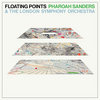 Promises
Promisesby Floating Points, Pharoah Sanders & The London Symphony Orchestra
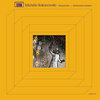 Rhapsodia / Battements solaires
Rhapsodia / Battements solairesby Michèle Bokanowski
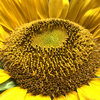 Sonic Essences
Sonic Essencesby Angela Winter
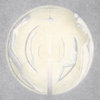 Slowly Forgetting, Barely Remembering
Slowly Forgetting, Barely Rememberingby Martyna Basta
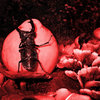 Sofia Says
Sofia Saysby Gaël Segalen
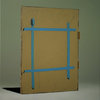 Everywhere at the end of time
Everywhere at the end of timeby The Caretaker

